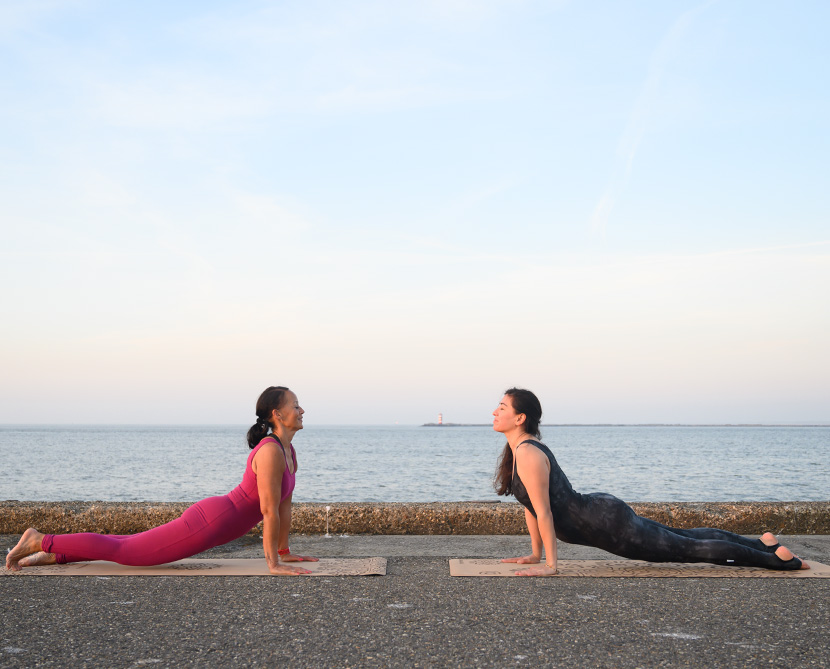
Somatic Yoga: A Tender Journey Towards Healing and Inner Harmony
Somatic yoga gracefully combines conventional yoga with gentle somatic movements, offering a wealth of advantages for the body, heart, and mind. Grounded in mindfulness and bodily awareness, this developing practice encourages participants to pause, listen intently, and engage in movements that cultivate healing and holistic wellness. For those who perceive standard yoga sessions as too physically challenging or mentally overwhelming, somatic yoga presents a caring alternative.
What Is Somatic Yoga?
Somatic yoga represents a distinctive and therapeutic fusion of somatic movement education along with classic yoga positions, breath work, and meditation. The term ‘somatic’ derives from the Greek word “soma,” signifying “the living body in its entirety.” This method highlights internal perception and deliberate movement over external appearance or performance. Somatic movements concentrate on minor, subtle, and frequently slow actions that retrain the nervous system, alleviate habitual tension patterns, and restore natural equilibrium and flexibility.
This practice integrates components from traditions such as Hanna Somatics, the Feldenkrais Method, and gentle Hatha yoga. Each session generally stresses mindful exploration, purposeful pauses, and repetitive motions aimed at promoting body awareness and neuromuscular re-education.
The Advantages of Somatic Yoga
Somatic yoga unites the advantages of traditional yoga—including increased flexibility, balance, and stress alleviation—with somatic movement’s emphasis on nervous system regulation and trauma recovery. This potent combination produces a significant impact in several areas:
1. Injury Recovery and Tension Alleviation:
By taking a slower approach and concentrating on the quality of movement, somatic yoga aids in retraining the body’s neuromuscular patterns. This can prove particularly beneficial for individuals recuperating from injuries, chronic pain, or repetitive strain, as the movements gently encourage the body to release deeply held muscular tightness.
2. Nervous System Regulation:
The mindful tempo and reflection inherent in somatic yoga soothe the autonomic nervous system, transitioning the body from fight-or-flight to rest-and-digest. This transition supports emotional regulation, a feeling of safety, and the body’s innate healing processes—all of which can be especially advantageous for those recovering from trauma or heightened stress.
3. Enhanced Body Awareness:
Focusing on internal sensations instead of external forms, somatic yoga improves proprioception (the awareness of one’s body in space) and interoception (the capacity to perceive internal signals like breath, heartbeat, and hunger). This enriched body awareness empowers individuals to respond more wisely to the body’s needs and signals.
4. Gentle and Approachable:
In contrast to more vigorous yoga styles, somatic yoga is approachable for individuals of all ages, sizes, and abilities. By prioritizing the internal experience over athletic performance, it serves as a fantastic option for those facing chronic conditions, mobility challenges, or emotional overwhelm.
5. Promoting Emotional Well-being:
By nurturing the bond between mind and body, somatic yoga aids in unlocking and processing trapped emotions that may appear as physical tension. The practice fosters emotional resilience, grounded presence, and self-compassion through conscious breath, movement, and rest.
What to Anticipate in a Somatic Yoga Session
A standard somatic yoga session will differ greatly from a traditional yoga class. You might spend much of the session lying on the floor, moving slowly in simple patterns that are repeated and mindfully adjusted. Instructors often guide students to close their eyes, deeply engage with each motion, and rest frequently to promote integration.
You won’t be required to “keep pace” with the class or execute complex postures; rather, the intention is to feel your way through each movement and tune into what your body desires in that moment. Movements typically begin small and increase in complexity only as the participant’s body expresses readiness.
Is Somatic Yoga Suitable for You?
Somatic yoga can be advantageous for anyone, but it is particularly beneficial for:
– Individuals recovering from injury, surgery, or trauma
– Those living with chronic pain, stress, or anxiety
– People who find traditional yoga challenging or overstimulating
– Older adults or individuals with restricted mobility
– Anyone curious about a more mindful, introspective way to move
It’s vital to understand that somatic yoga is not focused on achieving aesthetic ideals or pushing physical boundaries. Instead, it is a caring exploration of your body’s inner wisdom and natural rhythms.
Final Reflections
In a world that often demands relentless activity, productivity, and distraction, somatic yoga offers a welcome invitation to slow down and look within. By honoring the body’s lived experience and cultivating profound self-awareness, this gentle and nurturing practice supports lasting healing for the body, heart, and mind.
Whether you are on a path to recovery or simply seeking a more introspective route to wellness, somatic yoga provides a compassionate and effective means to reconnect with your body and restore balance from within.